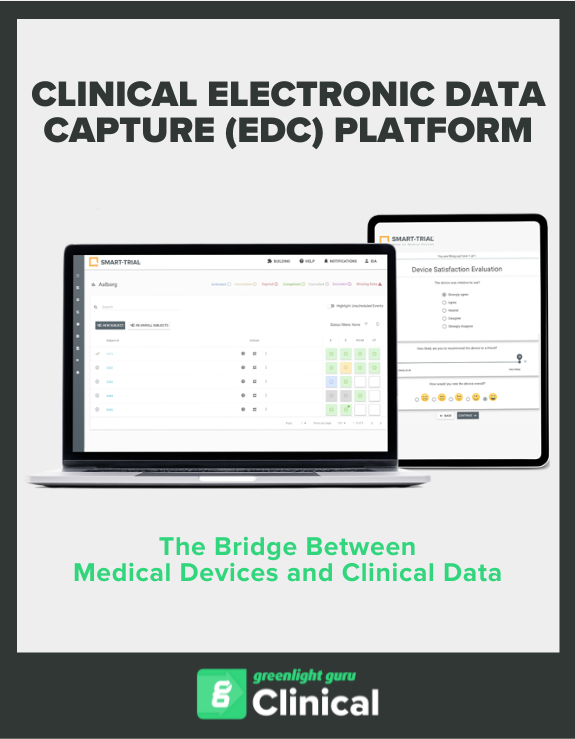Guidance on How to Conduct Clinical Investigations Under EU MDR

The Questions and Answers guidance document from the European Commission's Medical Device Coordination Group (MDCG) provides answers to some of the outstanding questions for conducting Clinical Investigations under the EU Medical Device Regulation (MDR).
We have constructed a short summary of the 19 page document here, to help medical device clinical investigation sponsors simplify MDR compliance for ongoing and upcoming studies.
The document covers key areas such as:
- Regulatory pathway for clinical investigations
- Definition of 'Substantial Modifications' to clinical investigations
- Inputs on clinical investigation timelines
- Overview of what to include in clinical investigation reports
- Overview of Performance, Clinical Performance, and Clinical Benefit definitions
- Guidance on Clinical Investigations that Overlap Between MDD & MDR
Regulatory Pathway for Clinical Investigations
One of the more significant pieces of the guidance document is found on page 17 (Annex I). Here, MDCG provides a nice overview of the regulatory pathway for Clinical Investigations under the EU MDR. The overview provides insights on the regulatory pathway for various clinical investigation types.
This can be extremely helpful to clinical investigation sponsors, who can now refer to this guidance based on the status of the medical device in question. The overview includes pilot clinical investigations and clinical investigations for medical devices that are already CE marked.

MDCG 2021-6 Regulatory Pathway Guidance (Annex I)
Definition of Substantial Modifications
Section 15 in the MDCG guidance includes the definition of a 'substantial modification of a clinical investigation'. It is defined as:
"a change to the clinical investigation which is likely to have a substantial impact on the safety or health or rights of the subject, or on the robustness or reliability of clinical data generated by the investigation."
Additionally, the guidance includes helpful information on when and how the clinical investigation sponsor should submit a substantial change notification.
Inputs on Clinical Investigation Timelines
Section 21 & 22 provide definitions of what should be considered the start and end date of clinical studies, as reporting of study start date is required by national legislation in some Member States. In general, the start date is defined as:
"the first act of recruitment in the clinical investigation in a Member State"
The end date is defined as:
"the end of a clinical investigation shall be deemed to coincide with the last visit of the last subject unless another point in time for such end is set Medical Devices Medical Device Coordination Group Document MDCG 2021-614 out in the clinical investigation (for example site closure occurring after the last visit of the last subject)"
Additionally, section 23 discusses if and when the clinical investigation sponsor should notify the end of the clinical investigation in one or more Member States.
Overview of What to Include in Clinical Investigation Reports
Section 25 of the guidance document revolves around the minimum requirements for the content of clinical investigation reports. It includes an outline of how clinical investigation sponsors should structure the clinical investigation report, with special focus on how to include serious adverse event (SAE) and adverse event (AE) summaries without jeopardizing subject privacy.
Overview of Performance, Clinical Performance, and Clinical Benefit Definitions
In section 3, the MDCG provides an overview of the difference between performance, clinical performance and clinical benefit definitions. In short, they are described in this illustration from the guidance document:
 MDCG illustration of performance, clinical performance and clinical benefit (Section 3)
MDCG illustration of performance, clinical performance and clinical benefit (Section 3)
Guidance on Clinical Investigation Overlap Between MDD & MDR
Section 27 includes helpful information on how to handle the MDR transition for clinical investigations that started prior to the date of application of Regulation 2017/745. In short, such ongoing clinical investigations can continue to be conducted. However, SAEs and device deficiencies occurring after the MDR application date must be notified to the MS, according to Article 80 of the MDR.
The MDCG 2021-6 guidance document can be read in full here.
Let Us Know If You Need Help
We hope this summary can help clinical investigation sponsors simplify MDR compliance of their clinical data collection. If you have a clinical investigation coming up, and you're unsure about aspects of MDR compliance, don't hesitate to reach out to us, we are always ready to help.
When it comes to post-market clinical follow-up (PMCF) what tools/resources are you using to fulfill the PMCF requirements of the MDR?
Find out what we do and how Greenlight Guru Clinical can help you on your path to EU MDR compliance. Contact us and get access to the Greenlight Guru Clinical software to test how you can simplify MDR compliant PMCF.
Jón Ingi Bergsteinsson, M.Sc. in Biomedical Engineering, is the co-founder of Greenlight Guru Clinical (formerly SMART-TRIAL). He was also the technical founder of Greenlight Guru Clinical where he paved the way for the platform’s quality standards, data security, and compliance.










